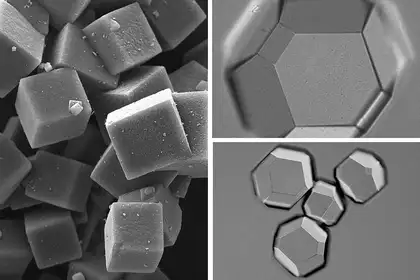
The beautiful structures of metal-organic frameworks have the potential to solve environmental and medical challenges.
Zeolites have been known since the ancient Greeks discovered these ‘rocks’ could trap water inside. Since their discovery, these porous minerals have been used for a range of applications in everyday life –from water treatment to medicine and even in your cat’s litter tray.
In the fifth lecture of the ‘Fascination Science’ series, Professor Shane Telfer of the Institute of Fundamental Sciences will share the history and application of a new kind of porous solid. Called metal-organic frameworks, they are changing the way we think about these fascinating materials.
The ‘Fascination Science’ series, which is held each month at Massey University’s Albany campus, takes the audience on a journey of scientific discovery. Professor Telfer’s lecture will begin by giving a brief history to demystify the complex structures.
Lessons learnt from boiling rocks
“Do you think it’s a good idea to boil a rock? What would be the point – a ruined stove? In most cases you would see nothing. But just like a pot on the stove will release steam, so will certain types of rocks which are able to trap water inside them. Zeolite literally means ‘boiling stone’.
“Porous materials such as zeolites have fascinated humankind and, after years of scientific research, they are used to filter water, separate the gases in air and refine petrol. But that’s not all – new applications for these materials is limited only by the imagination!”
Originally there were thought to be two broad sub-categories of porous material – organic and inorganic. Organic porous materials, like activated carbon, possessed no ordered structure but were useful for things like filtering sediment out of water, treating ethanol poisoning, air purification and even in oil spill clean-ups.
Inorganic porous frameworks possess highly ordered structures and are useful for things like gas and separation, catalysis, and water softening.
Metal-organic frameworks have the advantages of organic and inorganic porous materials, as well as many unique properties of their own. They are made by combining two types of building block – organic molecules and metal ions. The diversity of these components produces a diverse range of beautiful framework structures with different pore shapes and sizes.
A solution for climate change and medical treatment?
“These metal-organic frameworks have the potential to be used for a raft of applications,” Professor Telfer says. “They have beautiful architectures that can be tuned at the molecular dimension. But can they be used to sequester carbon dioxide directly from air? Is the targeted delivery of bioactive payloads in the human body possible? I will be exploring these questions and more.”
Discoveries made at Massey University have contributed strongly to the global surge of interest in metal-organic frameworks. These include new ways of making catalysts, frameworks that are built up using a set of different building blocks, and those that display unique and interesting structural and functional properties.
Lecture details:
The holey grail: New porous materials with beautiful structures and unparalleled functions.
Wednesday, April 26, 7.00-8.30pm
Sir Neil Waters Lecture Theatres, Massey University Auckland Campus, Albany.
For more information or to register to attend, go to http://massey.ac.nz/fascination-science